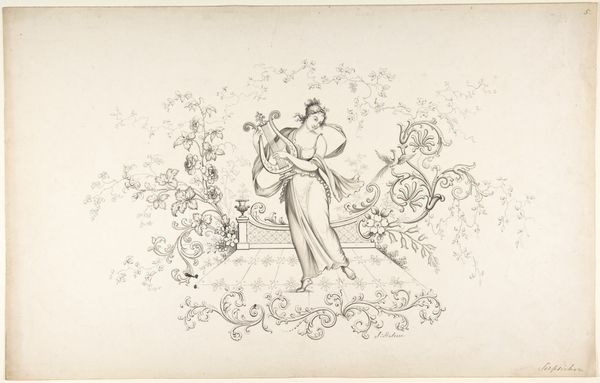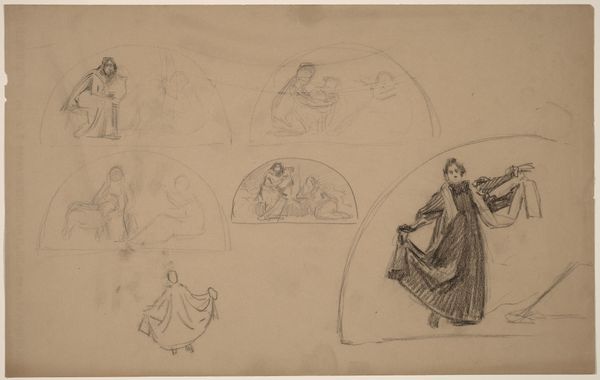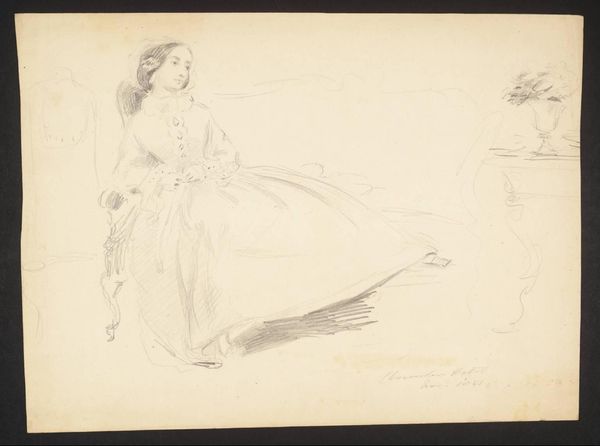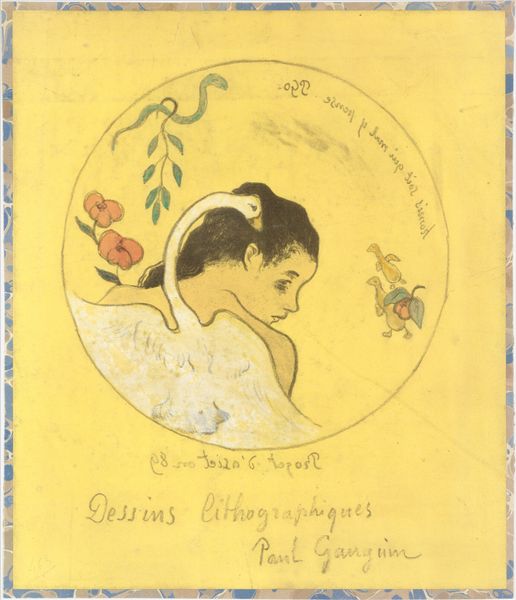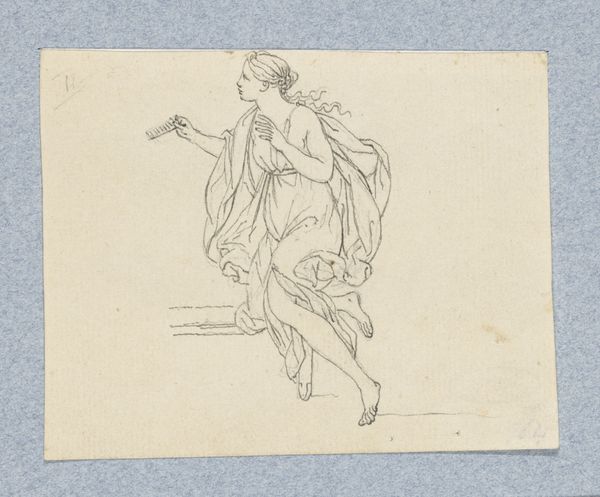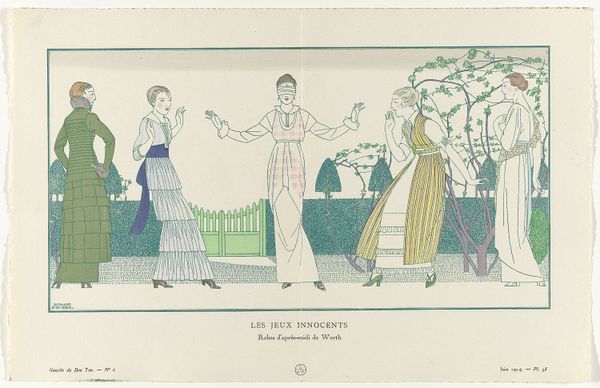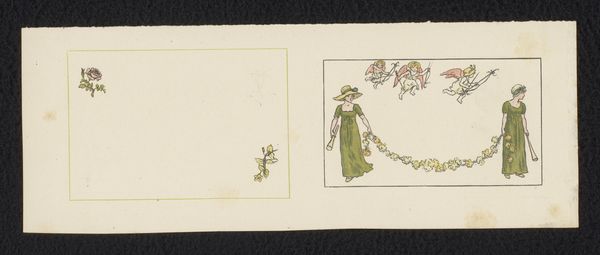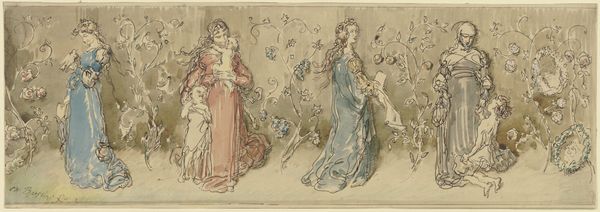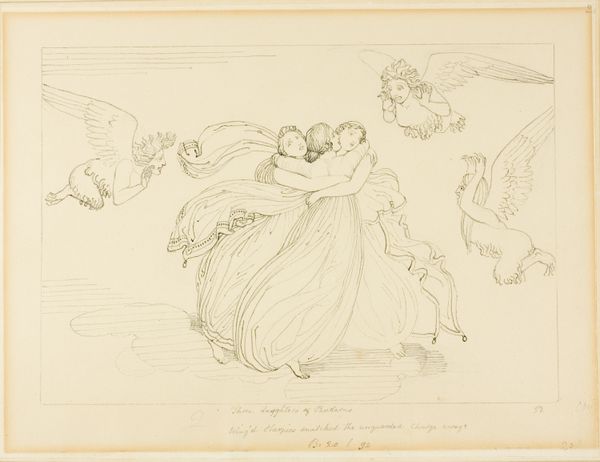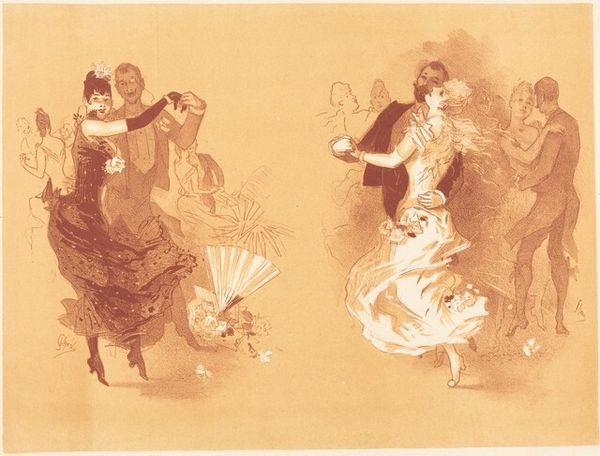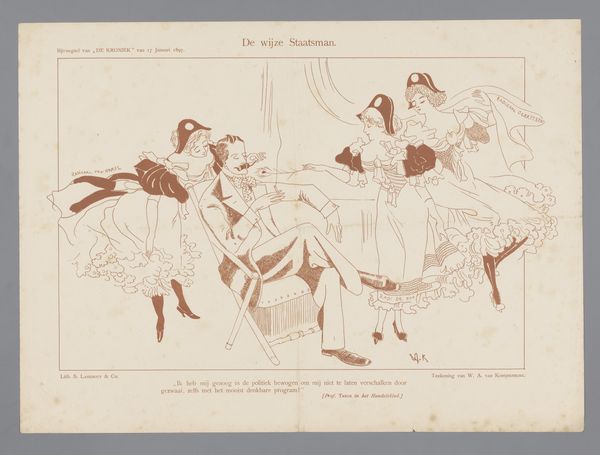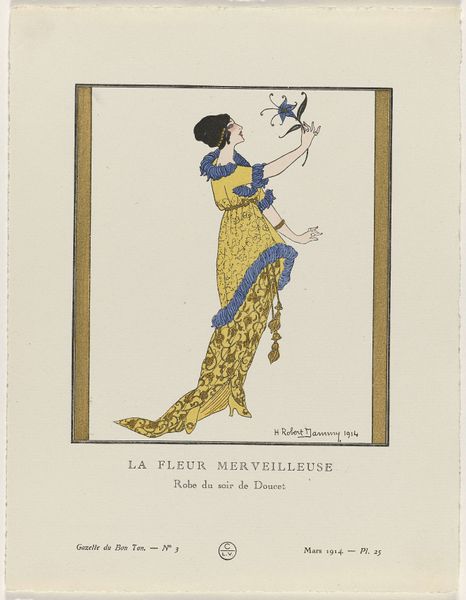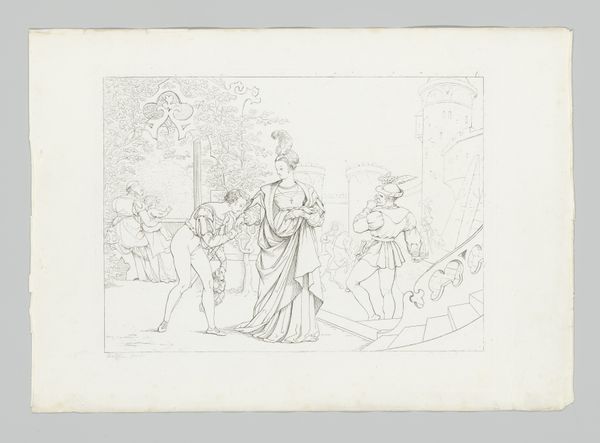
T.v. to danserinder, t.h. studie af en snerle i blomst 1845
0:00
0:00
drawing, watercolor, pencil
#
portrait
#
drawing
#
toned paper
#
light pencil work
#
water colours
#
landscape
#
figuration
#
personal sketchbook
#
watercolor
#
ink drawing experimentation
#
intimism
#
romanticism
#
pencil
#
sketchbook drawing
#
watercolour bleed
#
watercolour illustration
#
genre-painting
#
sketchbook art
#
watercolor
Dimensions: 204 mm (height) x 271 mm (width) (bladmaal)
Editor: So, this is Johan Thomas Lundbye's "T.v. to danserinder, t.h. studie af en snerle i blomst," created in 1845, using watercolor and pencil. It feels like a glimpse into a private moment, with the dancers and the delicate morning glory. What do you see in this piece? Curator: I see a fascinating dialogue between human activity and the natural world, imbued with a quiet symbolic language. The dancers, caught in a moment of implied movement, perhaps represent a fleeting joy, while the morning glory, a symbol of love and affection, hints at the emotional landscape of the scene. Do you notice how the seemingly disparate elements share a delicate, almost ethereal quality? Editor: Yes, they both have a certain lightness. The dancers’ poses aren’t static, and the morning glory is so gently rendered. It almost feels like a memory. Curator: Precisely. This echoes the Romantic period’s fascination with memory and emotion. But consider also how the positioning of the figures and the plant – side by side, yet separate – creates a visual tension. The dancing figures could symbolize earthly pleasures while the morning glory might signify a spiritual reaching. Editor: That's a really interesting point. I hadn’t thought about them contrasting each other that way. I was more focused on their shared delicacy. Curator: The beauty of art lies in these multiple interpretations. It’s like a cultural mirror, reflecting back not only the artist's intentions, but our own biases and perspectives. Perhaps the artist is contemplating transient states or reflecting the spiritual world through both subjects. Editor: I see what you mean. Thinking about it now, the separate studies offer a deeper exploration of Lundbye’s perspective of that particular moment. Curator: Absolutely, and perhaps even our own perspectives of similar moments. Considering that we are having this discussion almost two centuries later is profound. Editor: That’s given me a lot to think about; a quiet domestic scene carrying such enduring layers of meaning. Thanks for your insight!
Comments
No comments
Be the first to comment and join the conversation on the ultimate creative platform.

